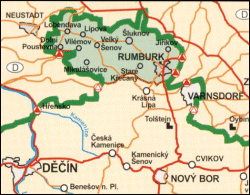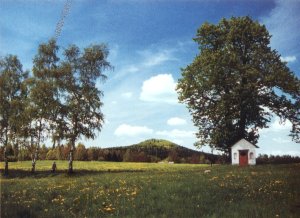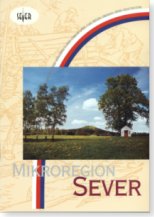    |
|||||||||||||||||||||||||||||||||||
|
|
Mikroregion Sever (Micro-Region North)
It lies in the north of Bohemia in the region officially called “Šluknovský výběžek” (Šluknov Projection). This borderland runs into Germany like a peninsula into the sea. The Micro-Region is situated in the northerner part of the Šluknov Projection.
Natural beauty of this region features the hilly landscape that is varying according to geologic subsoil of this or that piece of land. Well-marked network of tourist paths enables the visitors to see the most valuable spots of beauty. These include a lot of unique geographic places of interest, sightseeing, friendly country pubs and taverns, and last but not least lot of lookout towers, the silent witnesses of the latest two centuries of the history of the land. The area of the Micro-Region includes parts of two protected reservations – the Reservation Labe Sandstone Rocks and the National Park Czech Switzerland (in the south-west of the region) that together with the National Park Saxon Switzerland in Germany form geographic and landscape unit of European importance. The pine forests on the sandstone rocks are the typical features of the countryside, but in the cold shade of the rocks you can find spruce woods, and a rich moss and lichen cover. The fauna is represented by red deer, deer, chamois, boars, and you can even rarely come across a lynx, that was nearly exterminated in recent centuries. A wide variety of birds live here too, for example falcons, buzzards, kestrels and a lot of singing birds. This region is characterised by meeting of three cultures – Czech, Saxon, and Lusatian. The framed house with an original construction is a typical feature of local folk architecture. The region remained a part of Bohemia mainly because of firmly rooted Catholicism and the influence of Baroque culture (there was Lutheranism in neighbouring Saxony). In the 16th century local people started making flax into linen, which lead to a huge boom of textile industry in the last third of the 19th century. The huge world depression of the beginning of the 1930’s nearly caused collapse of the textile industry in the region. The forced moving of the most of the original German population to Germany after the World War II, and not sufficient re-settlement of this rough and hard-to-reach piece of land never allowed a full recovering of the industry in formerly high populated places. Nowadays the developing collaboration of the towns and villages in the region brings the first marks of their comeback among the prosperous places in the Czech Republic. Other Information
|
|
|||||||||||||||||||||||||||||||||

Město Varnsdorf, www.varnsdorf.cz, 25. 4. 2025 12:15
 ESTABLISHING
ESTABLISHING


